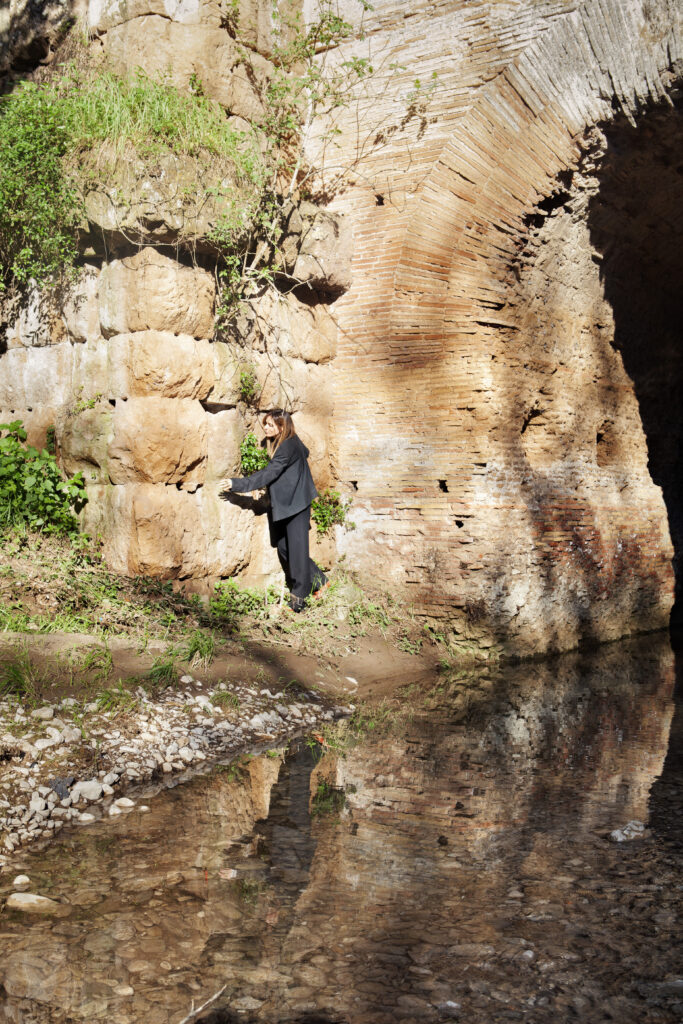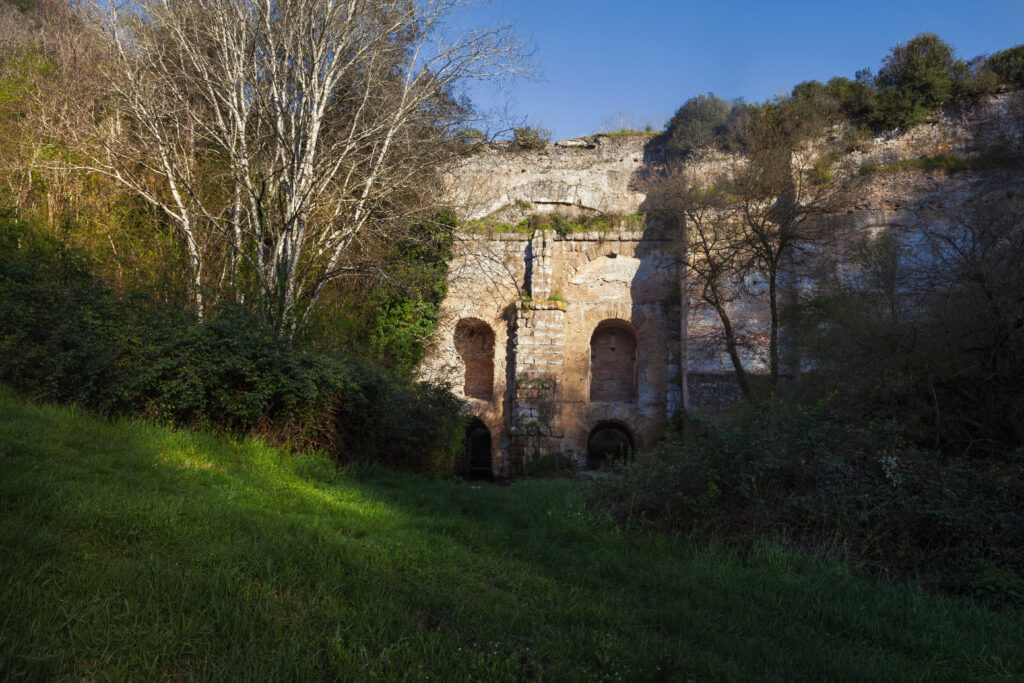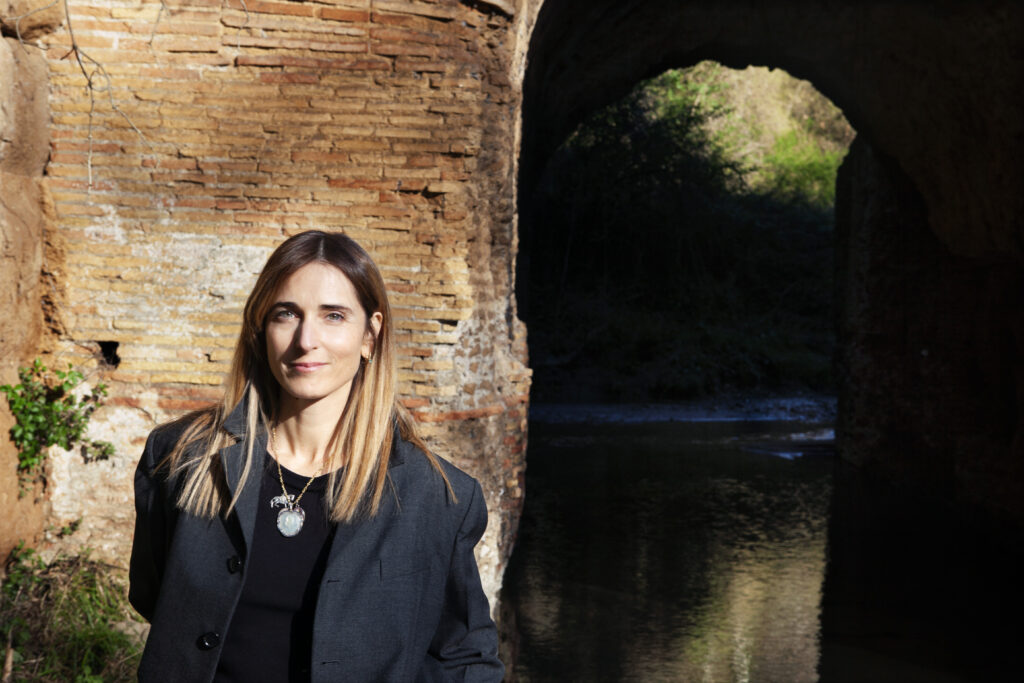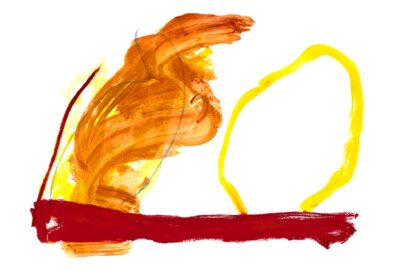Editor’s Note: The following text is excerpted from Chiara Barzini’s L’Ultima Acqua: Il Sogno Perduto di Los Angeles, published in Italy by Einaudi, and forthcoming in Britain from Canongate under the title Aqua: A Story of Water and Lost Dreams, in November 2025. It is presented here in both the original Italian and the English language version rendered by the author. We’ve also published an interview about this work between David L. Ulin and Chiara Barzini, with more background and insight into the project, which you can find here.
‘I want to tell you to live in the messy world, throw yourself into the convulsion of the world . . . I’m not telling you to make the world better, because I don’t think that progress is necessarily part of the package. I’m just telling you to live in it. Not just to endure it, not just to suffer it, not just to pass through it, but to live in it. To look at it. To try to get the picture. To live recklessly. To take chances. To make your own work and take pride in it. To seize the moment.’
—Joan Didion, Commencement Speech, UC Riverside,1975 1 Joan Didion, Commencement Speech, UC Riverside, in Planting a Tree Is Not a Way of Life (1975), <https://news. ucr.edu/articles/2022/01/10/joan-didions-lost-commencement-ad- dress-revealed>
My favourite moment in Sunset Boulevard has always been the final police interrogation. Norma ignores all the questions the detectives ask her about the murder. She seems unfazed by their words and stays seated at her vanity station staring at her reflection in both her handheld mirror and the table mirror, examining two versions of herself, unsure whether to make peace with reality or stay lost in fantasy. The police shake her awake, but she takes her time. She doesn’t want to give up quite yet. She deliberately drags out every gesture. Her movements are almost unbearably delayed. As the detectives hammer her with questions, she fixates on the angle of a curl on her head. Anything, anything at all, even a curly lock of hair—anything but reality.
The only thing that wakes Norma up is the presence of the cameras. Max, her butler, understands he can use them as a tool to lure her down the stairs, towards the police. “Let’s all pretend these aren’t reporters,” is the agreement he makes with his muse. And suddenly she’s stirred.
“Tell Mr. DeMille I’ll be on the set at once,” she says.
“Cameras, action!” Max screams from the bottom floor.
Norma emerges in her sparkling gown and performs the most famous staircase descent in cinema history, engrossed in her vision, reverting to the glory days of her past.
“So they were turning, after all—those cameras,” goes Joe Gillis’s voiceover. “Life, which can be strangely merciful, had taken pity on Norma Desmond. The dream she had clung to so desperately had enfolded her.”
Norma welcomes the lights, smiles at the operators. She quivers: “You see, this is my life, it always will be. There is nothing else: just us and the cameras, and those wonderful people out there in the dark.” Then she turns to Max and utters her famous final line: “All right Mr. DeMille, I’m ready for my close-up.” Norma moves towards the camera now. Her arm is outstretched as if she wants to grab someone’s hand, a plea for help, but also an imperious gesture: I’m here, I’m right here with my arched eyebrows and my wide-open eyes and mouth. I might even bite you. Norma’s close-up slowly blurs and dissolves. The credits appear, but those watching her want to go back. We want to stay there with her because we share her fear. We all need to believe we are unforgettable. We want to be in the room with the photographers and the lights and the warmth. We want life to glow.
After the fire at my childhood home, I kept seeing Gloria Swanson’s staircase looming in the distance. I wondered if there could ever be a way to walk down those steps triumphantly without having to imagine a fictitious set on the other side, without hanging on so desperately to our old selves. The question I kept trying to answer was: were we still allowed to dream in a world that was falling apart? Was I turning into a broken-legged version of Norma Desmond? Wobbling down the stairs with my broken knee, walking straight into an arrest without even knowing it?
Then one night at a dinner party, the actor Urbano Barberini, whom I had worked with on a radio play many years earlier, asked what my book was about. I was ready to receive the usual blank look at the mention of the word “aqueduct,” but he smiled enthusiastically. Did I know an abandoned ancient aqueduct lay in his backyard right outside Rome? Ponte Lupo was a fragment of the Acqua Marcia aqueduct, but it was so huge and imposing that Thomas Ashby, the British archaeologist who discovered and dedicated his life to studying Roman aqueducts, considered it the most magnificent and mysterious of them all. He named it Il Gigante dell’acqua: the water giant.
“Feel free to come and see it anytime you like,” Urbano said. “I’m always there under its huge shadow.”
The slightly more experienced, upgraded version of myself tried really hard not to see this as a sign from the gods.
But of course I did.
Urbano came from an aristocratic Italian family and had been involved in a long-winded legal battle for some land he was meant to inherit. He’d been working as an actor in England in the early 2000s when he found out he’d become the sole proprietor of an ancient family estate in the Roman countryside, a few hundred metres from Villa Adriana and the Plauzi tomb, a sacred place for ancient Romans. At the time, the property had been occupied—or, rather, squatted—for about sixty years by a group of shepherds who used the land to graze their sheep and dump tires, tractors, and agricultural products. Now it was his, as was the ancient aqueduct that lay untouched and buried beneath the weeds and shrubs.
I went to visit Urbano’s estate with Luca and my children on a warm summer day. We passed the majestic front gate in San Giovanni in Campo Orazio, and Urbano greeted us with his young child Maffeo and his wife Viviana in their farmhouse that stood on the remains of an ancient thirteenth-century castle. Urbano loaded us all onto his pickup truck and drove down to the bottom of the property, one of the most magical places I’d ever been to. Halfway into the garden stood a mix of both crumbling and remodelled ancient buildings, including the remains of a medieval castle. As we descended into the valley, we began to feel the presence of water. It was all around us. The car stopped in front of a cliff where a prehistoric waterfall plunged from the woods for fifty metres and dropped into a small lake surrounded by ferns.
We kept going alongside the cliff, over bumpy terrain, across muddy puddles and streams. The kids were ecstatic and bounced around in the back of the truck. It was late in the day; the summer sky was bright pink and everything around us seemed enhanced, brighter and more vivid than ever. After a few miles there were no more buildings in sight. We crossed a river and were surrounded by wilderness. A black-crowned night heron took off from beneath the vegetation. The June grass was taller than us. We got off the truck and when we looked up, there it was: the greatest Roman ruin I had ever seen in the wild. A colossal fragment of the Roman aqueduct made of lime, bricks, and masonry. No guards, no lines, no tickets, no souvenirs. Just a huge wall sitting at the edge of time.
In antiquity Ponte Lupo was one of the most important Roman hydraulic engineering works in the world. It dated back to 144 bc, was originally built by the praetor Quintus Marcius Rex, and was almost one hundred kilometres long. It collected water from the headwaters of the Aniene River. There was so much of it at the time that it flowed at two thousand litres per second. It passed over bridges and arches and dropped into long underground sections. Over time the aqueduct was reinforced and enlarged and became the junction of various Roman water passageways until it was used as a dam.
Emperors worked on Ponte Lupo for centuries, adding and removing features. Septimius Severus built a high hollow space inside the wall, terraced with reinforcing piers so that water could pass from one side of the valley to the other. From above, the eleven aqueducts of Rome looked like aquatic arteries feeding into a giant heart, but the arrival of the Goths in 537 broke this enchantment. The first thing they did when they got to Rome was cut off its water. To weaken sovereignty, you had to remove its source of power. Water had been at the heart of building the Roman Empire, so the Goths smashed the aqueducts and left the city dry. In the same way that the Owens Valley rebels attacked Los Angeles by dynamiting its spillways, the Goths pillaged all the bridges that served as conduits of water.
To stop further attackers, the Roman general Belisarius shut down the aqueducts completely so they couldn’t be used as passageways. By the early seventh century, only one, the Aqua Virgo, was working properly. From then on, pipes were constantly struggling to keep the water running, but the ancient buildings were crumbling and their leaks created swamps, which caused disease. After they were cut off, the original aqueducts were never rebuilt or restored. Most of their arches collapsed. Romans were forced to get their water from wells and the Tiber River.
It was the end of an era.
The Roman Empire had thrived in what Kyle Harper called “a strangely watery world.” Water had turbocharged its capacity for expansion. Its collapse coincided with the arrival of the Goths along with sudden drought and a changing climate. An unpredictable ecosystem had played a huge role in the unforeseen change in Rome’s fortunes. And here we were, again, in the throes of irreversible change.
All that’s left of Ponte Lupo is a section roughly thirty metres high, 135 metres long, and more than eighteen metres thick. The Acqua Marcia is still there. In ancient times, this was considered by the Romans to be sacred, inviolable water. According to legend, the Emperor Nero defiled it by diving into it and was instantly stricken with an illness sent by the gods. Ponte Lupo’s mysterious name derived from the god Faunus, known as Luperco, who protected herds of sheep and goats from wolf attacks. The shepherds who had been squatting on Urbano’s land had unknowingly been part of a millenia-long tradition of herding under the bridge.
Ponte Lupo was also deemed sacred because it crossed the “Valley of the Dead,” a place that owed its name to the amount of human and archaeological artifacts that had been found in its soil. Animal carcasses, bodies from soldiers fallen in battle, and an assortment of fish bones all emerged from its acque rosse, the “blood waters.”
My children jumped out of the pickup truck and started to run around. Everything felt wet, even the air. It was one of the most humid places I’d ever visited. Even the sound of the leaves fluttering in the wind was thick and muffled, as if you were listening to it underwater. The dampness created a quiet microcosm. But it wasn’t that same summer-heat mosquito humidity that I knew from suffocating Augusts in Rome. It was something else. The air under the magnificent bridge and all around the river seemed to be made of water. You could smell it and breathe it. Everything was liquid.
We walked over to the colossus and felt transported to another era. The children grew hyper. We sensed we were under the influence of a potent, primordial force. We screamed, waiting for the echo to come back to us, and ran around the soaring arches, like satellites drawn to a tired old planet. We were charged with electricity and hope. It was a magnificent construction, just sitting there next to a beautiful stream.
The ancient architects and engineers of the Roman Empire were romantics in that they built for eternity. But the future they imagined was so different from what stood before us. Ponte Lupo functioned in full operation for about seven centuries. And now there we were, running around, trampling over a thousand years of skulls and sacred waters. All the layers of architecture still stood here, telling stories of wars, of peaceful reigns, of unruly nature, of blood and extinct aquatic life.
My children disappeared into the gorge behind the archway, following the river’s course upstream. Hovering in that happy bubble were all the scents I had loved in my life: the smells of childhood, of magical hikes with my father, of sambuca plants, wet nettle leaves, and mysterious Etruscan valleys where wolf packs grazed. The water giant towered above us, its mere existence now seeming impossible. How had so much grandeur survived for so long? We were still drinking the same water. Did we still hope it might heal us as the ancient Romans did?
Pebbles and chunks of clay spouted to the surface of the stream from the riverbed. Everything was alive and huge. We trembled in front of this remote feeling of loss. Things changed all the time: aqueducts in Rome became bomb shelters during wars. In the Middle Ages, the coliseum was seen as a temple that had landed from outer space and the people lost all knowledge of and connection to its original incarnation. At Ponte Lupo in 1867, after losing the battle of Mentana in northern Rome, Giuseppe Garibaldi and a few of his revolutionary volunteers hid in a tiny apartment in the aqueduct’s wall where a small window overlooked the entire valley below. He could mend his wounds while having a perfect view of any incoming threats.
In front of the great giant, our return to dust seemed like a light and natural passage. The bridge with its nests and wild birds and trickling waters was a reminder that the future wasn’t set in stone and that it held its own mystery.



La discesa
Voglio dirvi di vivere nel disordine del mondo, di buttarvi nel suo scompiglio. Non vi sto dicendo di migliorarlo, perché non credo che il progresso sia necessariamente compreso nel pacchetto. Vi sto solo dicendo di viverci dentro. Non solo di sopportarlo, non solo di subirlo, non solo di attraversarlo, ma di viverci dentro. Guardarlo. Cercare di capirlo. Vivere in modo spericolato. Rischiare. Creare il proprio lavoro ed esserne orgogliosi. Cogliere l’attimo.
-Joan Didion, discorso ai laureati, Università di Riverside, 1975.
La mia scena preferita di Viale del tramonto è sempre stata quella finale, durante l’interrogatorio della polizia. Norma è seduta nel suo boudoir, davanti allo specchio della toilette, circondata da investigatori. Ignora la tem- pesta di domande che le fanno sull’omicidio di Joe Gillis. Imperturbabile, continua a fissare il proprio riflesso nello specchio grande e in quello piccolo che tiene in mano, come se stesse esaminando due versioni di se stessa con- temporaneamente. Esita, indecisa se scendere a patti con la realtà o rimanere persa nella sua nuvola di fantasia. La polizia cerca di scuoterla, ma Norma prende tempo. Non vuole ancora arrendersi. Trascina ogni gesto in modo deliberato. La lentezza dei suoi movimenti è quasi intollerabile. Si concentra su un ricciolo, se lo rigira tra le dita. Anche una ciocca di capelli è meglio della realtà.
L’unica cosa che risveglia Norma è la presenza delle telecamere. Max, il maggiordomo, capisce che può usarle come strumento per attirarla giú per le scale e consegnarla alla polizia. Decide di farle credere che al piano di sotto non ci siano giornalisti, bensí una troupe cinematografica che sta allestendo le riprese del suo prossimo film. E cosí Norma si riscuote dal torpore.
– Di’ al signor DeMille che tra un minuto sarò pronta.
– Motore, azione! – urla Max dal piano inferiore.
L’ex diva emerge dalla camera da letto con un vestito da sera luccicante e si esibisce nella discesa di scale più famosa della storia. «Cosí, malgrado tutto, sta girando il suo film», dice la voce fuori campo di Joe Gillis. «Il destino a volte è stranamente generoso e ha avuto compassione di Norma Desmond. Il sogno a cui si era con tanta disperazione aggrappata ora la culla dolcemente».
Nora accoglie le luci, sorride agli operatori. Freme: – Questa è la mia vita, e lo sarà per sempre. Non esiste altro: solo noi e la macchina, e nell’oscurità il pubblico che guarda in silenzio –. Poi si gira verso la macchina da presa e pronuncia la sua famosa battuta finale. – Eccomi, DeMille, sono pronta per il mio primo piano –. Norma si muove verso l’inquadratura, il braccio proteso in avanti come se volesse afferrare la mano di qualcuno, una richiesta d’aiuto, ma anche un gesto impositivo: io ci sono, sono qui con le mie sopracciglia arcuate e i miei occhi sgranati e la bocca aperta, pronta a mordervi. Il primo piano di Norma lentamente si sfoca e si dissolve. Appaiono i titoli di coda, ma chi guarda lo schermo vuole tornare indietro. Vogliamo rimanere con lei, condividiamo la sua paura. Vogliamo la stanza con i fotografi e le luci e il calore. Vogliamo che la vita si accenda. Dopo quel periodo difficile, continuavo a vedere la scalinata della villa su Sunset Boulevard che incombeva in lontananza. Mi chiedevo se ci fosse un modo per scendere i gradini senza dover immaginare un set fittizio dall’altra parte, senza rimanere cosí disperatamente aggrappata al passato. Le domande a cui cercavo di rispondere erano: possiamo ancora permetterci di sognare in un mondo che sta cadendo a pezzi? Mi stavo trasformando in una versione zoppa di Norma Desmond? Stavo forse barcollando lungo le scale con il mio ginocchio rotto, inconsapevole di andare incontro a una schiera di poliziotti?
Poi, una sera, durante una cena per il catalogo di una mostra di Letizia Battaglia a cui avevo partecipato, l’attore Urbano Barberini, con cui avevo lavorato a uno spettacolo radiofonico molti anni prima, mi ha chiesto casualmente di cosa parlasse il mio prossimo libro. Ero pronta a ricevere il solito sguardo assente alla parola «acquedotto», ma lui ha sorriso con entusiasmo.
-Conosci la storia di casa mia? – mi ha chiesto.
Non la conoscevo. Non sapevo che in fondo al suo giardino alle porte di Roma c’è un antico acquedotto romano. Si chiama Ponte Lupo e in origine faceva parte dell’acquedotto dell’Acqua Marcia. Thomas Ashby, l’archeologo britannico che aveva dedicato la sua vita agli acquedotti romani, lo considerava il piú magnifico e misterioso di tutti. L’aveva battezzato «il gigante dell’acqua».
-Dovresti venire a trovarmi cosí lo vedi, – mi ha detto Urbano. – Sto sempre lí, sotto la sua enorme ombra.
Mi sono sforzata di non considerarlo un segno. Ma ovviamente lo era.
All’inizio degli anni Duemila, mentre lavorava come attore in Inghilterra, Urbano ricevette la notizia di essere diventato proprietario di un’antica tenuta di famiglia nel- la campagna romana, a poche centinaia di metri da Villa Adriana e dalla tomba dei Plauzi, un luogo sacro per gli antichi Romani. Per circa sessant’anni quella terra era stata occupata da un gruppo di pastori locali che l’avevano utilizzata per far pascolare le pecore. Al suo arrivo, Urbano trovò un’enorme discarica: pneumatici, trattori, prodotti agricoli e plastica. E in fondo al giardino, sepolto tra erbacce e arbusti, c’era l’acquedotto. Urbano se ne innamorò e da quel momento decise che avrebbe curato il terreno, avrebbe salvato l’acquedotto.
Sono andata a visitare la sua tenuta con Luca e i miei figli in una bellissima giornata di giugno. Abbiamo varcato il maestoso cancello d’ingresso di San Giovanni in Campo Orazio e Urbano ci ha accolto insieme alla moglie Viviana e al figlio Maffeo nella casa colonica che sorge sui resti di un antico castello del xiii secolo. Ci ha caricati tutti sul suo pick-up 4×4 e, mentre il sole cominciava a tramontare, ci ha portato a esplorare uno dei luoghi piú magici di tutta la zona. A metà del giardino c’era un conglomerato di edifici antichi, alcuni fatiscenti altri ristrutturati, tra cui i resti di un castello medievale. Man mano che ci addentra- vamo nella valle, abbiamo iniziato a percepire la presenza dell’acqua. Era tutt’intorno a noi. Il pick-up si è fermato davanti a una rupe, dove una cascata preistorica precipita- va dal bosco per cinquanta metri e scendeva in un piccolo lago circondato da felci.
Abbiamo continuato a costeggiare la parete rocciosa su una stradina sterrata, attraversando acquitrini, ruscelli e boschi. I bambini erano estasiati, sobbalzavano sul retro del pick-up urlando e cantando. Il cielo estivo era di un rosa acceso e tutto sembrava una versione potenziata della realtà, piú luminosa e vivida che mai. Dopo qualche chilometro non c’erano piú costruzioni in vista. Abbiamo attraversato un fiume e siamo finiti in mezzo alla natura selvaggia e incontaminata, e dopo poco ci siamo fermati. Un airone dalla corona nera si è alzato in volo dalla folta vegetazione. Siamo scesi dal pick-up, l’erba di giugno era altissima e quando abbiamo alzato lo sguardo l’abbiamo visto: «il gigante dell’acqua». Davanti ai nostri occhi si ergeva la piú grande rovina romana che avessi mai visto immersa nella natura. Un colossale frammento di acquedotto romano fatto di calce, mattoni e grossi blocchi di roccia magmatica. Niente guardie, niente file, niente biglietti, niente souvenir. Solo un enorme muro ai confini del tempo. Nell’antichità Ponte Lupo era considerato una delle opere di ingegneria idraulica piú importanti al mondo. L’acquedotto dell’Acqua Marcia, del 144 a.C., era lungo quasi cento chilometri. Raccoglieva l’acqua dalle sorgenti del fiume Aniene. L’acqua passava sopra ponti e archi, e per lunghi tratti s’inabissava sottoterra. Nel corso del tempo l’acquedotto fu rinforzato e ampliato, diventando il crocevia di vari collegamenti idrici romani, fino a quando fu utilizzato come diga. Un’altra diga.
Dall’alto, gli undici acquedotti di Roma che davano vita a migliaia di fontane, terme e bagni pubblici, sem- bravano arterie che confluivano in un cuore gigante, ma l’incantesimo si ruppe nel 537, quando arrivarono i Goti. La prima cosa che fecero fu tagliare l’acqua. Per indebolire un impero bisogna eliminare la sua fonte di potere. Nel caso dei Romani, il potere veniva dall’acqua. Cosí come i ribelli della Owens Valley avevano attaccato l’impero di Los Angeles facendo saltare le dighe, i Goti saccheggiarono i ponti che servivano da condotti idrici e lasciarono a secco la città. Dopo l’assedio dei Goti, i meravigliosi acquedotti originali non furono piú ricostruiti o restaurati e la maggior parte degli archi crollò. I Romani furono costretti a procurarsi l’acqua dai pozzi e dal fiume Tevere.
Fu la fine di un’epoca.
L’Impero romano aveva avuto modo di prosperare all’interno di quello che Kyle Harper definisce «un mondo acquatico e insolito», che ne aveva favorito l’espansione. La caduta fu dovuta agli attacchi sempre piú frequenti, ma andò anche di pari passo con il calo delle precipitazioni, l’improvvisa siccità e il cambiamento del clima. L’imprevedibilità di quell’ecosistema ebbe un ruolo cruciale nel mutamento repentino delle sorti di Roma. E oggi siamo di nuovo nelle mani di un impero in bilico, nel pieno di una trasformazione irreversibile.
La rovina di Ponte Lupo è alta piú di 30 metri, lunga piú di 135 e profonda piú di 18. L’Acqua Marcia è ancora qui che scorre tra le pareti di rocce primordiali. I Romani la consideravano sacra e inviolabile. Secondo la leggenda, Nerone, che l’aveva contaminata immergendovisi, era stato immediatamente colpito da una malattia mandata dagli dèi. Il misterioso Ponte Lupo era considerato sacro anche perché attraversava la Valle dei Morti, un luogo che dove- va il suo nome alla quantità di manufatti umani e archeologici rinvenuti nel terreno. Carcasse di animali, scheletri di soldati caduti in battaglie passate e un assortimento di lische di pesce emergevano dal cosiddetto Fosso dell’Acqua Rossa, come lo chiamavano gli antichi.
Quando siamo arrivati al ponte, i miei figli hanno seguito Maffeo e hanno iniziato a correre in preda a una frenesia insolita. Ci sembrava di essere in un bosco subacqueo. Era uno dei luoghi piú umidi che avessi mai visitato, persino il fruscio delle foglie era denso e ovattato come se fossimo dentro un lago. L’umidità creava un microcosmo silenzioso. Ma non era l’umidità dei soffocanti mesi di agosto a Roma, era qualcos’altro. Sotto il ponte e intorno al fiume, l’aria stessa sembrava fatta d’acqua. Tutto era liquido.
Ci siamo avvicinati al colosso e siamo stati catapultati in un’altra epoca. I bambini erano in fibrillazione, noi ci sentivamo sotto l’influenza di una forza potente e primordiale. Urlavamo alla ricerca di un’eco e correvamo intorno ai giganteschi archi come nuovi satelliti richiamati da un pianeta vecchio e stanco. Eravamo carichi di elettricità e speranza.
I miei figli sono scomparsi nella gola dietro l’arco, seguendo il corso del fiume a monte. In quella bolla felice c’erano gli odori che avevo amato per tutta la vita, gli odori dell’infanzia e delle escursioni magiche con mio padre, le piante di sambuco, le foglie di ortica bagnate e le misteriose valli etrusche dove sfrecciavano i branchi di lupi che immaginavamo da piccoli. Le mura troneggiavano sopra di noi; la loro esistenza sembrava impossibile. Come aveva fatto tanta grandezza a sopravvivere cosí a lungo? Stavamo ancora bevendo quelle acque, sperando che potessero curarci?
Dal letto del fiume affioravano ciottoli e pezzi di argilla. Ponte Lupo aveva funzionato a pieno regime per circa sette secoli prima di diventare una rovina inerme. Gli strati architettonici erano ancora intatti, e raccontavano storie di guerre, di regni pacifici e di natura indisciplinata, di sangue e di pesci estinti. Durante le guerre mondiali, gli acquedotti di Roma diventarono rifugi antiaerei. Nel Medioevo si credeva che il Colosseo fosse un tempio sbarcato dallo spazio, e per un periodo gli abitanti di Roma dimenticarono le sue vere origini. A Ponte Lupo, nel 1867, dopo aver perso la battaglia di Mentana, Garibaldi e alcuni dei suoi soldati rivoluzionari si nascosero in un minuscolo appartamento nella parete dell’acquedotto, con una finestrella che dava sulla valle sottostante. Garibaldi poté curare le proprie ferite e al contempo avere una visuale perfetta sulle minacce in arrivo. E ora eravamo lí noi, a correre tra mille anni di teschi.
Di fronte al gigante dell’acqua, il fatto che a breve saremmo tutti tornati a essere polvere sembrava un passaggio leggero e naturale. Il ponte, con i suoi nidi, gli uccelli selvatici e le acque che scorrevano indifferenti, ci ricordava che il futuro non era scolpito nella pietra, ma racchiude un mistero.
Editor’s note: the Italian version of the book, L’Ultima Acqua: Il Sogno Perduto di Los Angeles, is available for purchase here, and the English version, Aqua: A Story of Water and Lost Dreams, is available for pre-order here.


